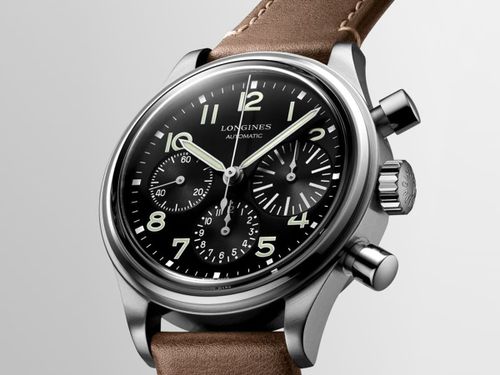The Art of Watch Making: From Mechanical to Smart
In This Article:
- • Traditional Watchmaking
- • Swiss Innovation
- • Quartz Revolution
- • Luxury Timepieces
- • Smart Technology
From intricate mechanical movements to cutting-edge smart technology, watchmaking represents centuries of precision engineering and artisanal craftsmanship. Each timepiece tells a story of innovation, tradition, and the relentless pursuit of perfection.
The Art of Mechanical Movements
Traditional Craftsmanship
Each mechanical watch movement is a miniature marvel of engineering, comprising hundreds of precisely crafted components working in perfect harmony.
- • Hand-finished Components
- • Geneva Stripes
- • Beveled Edges
- • Perlage Finishing
Modern Innovations
Contemporary watchmaking combines traditional techniques with cutting-edge materials and manufacturing processes.
- • Silicon Components
- • Anti-magnetic Materials
- • Advanced Lubricants
- • Ceramic Bezels
Complications: Beyond Time
Chronograph
The most popular complication, allowing precise timing of events down to fractions of a second.
- • Column Wheel
- • Vertical Clutch
- • Split-seconds
Perpetual Calendar
Automatically adjusts for months and leap years, requiring no correction until 2100.
- • Date Display
- • Month Indicator
- • Leap Year Cycle
Minute Repeater
The pinnacle of watchmaking complexity, chiming the time on demand using tiny hammers and gongs.
- • Cathedral Gongs
- • Strike Governor
- • Acoustic Design
Legendary Manufactures
Swiss Heritage
The heart of fine watchmaking, Swiss manufacturers have defined horological excellence for centuries.
Patek Philippe
Est. 1839 - Known for perpetual calendars
Vacheron Constantin
Est. 1755 - Oldest continuous manufacturer
Audemars Piguet
Est. 1875 - Royal Oak innovator
Modern Masters
Contemporary brands pushing the boundaries of innovation while respecting tradition.
Richard Mille
Est. 2001 - Technical innovation
F.P. Journe
Est. 1999 - Artistic excellence
MB&F
Est. 2005 - Horological machines
The Art of Watch Collecting
Investment Timepieces
Fine watches have become significant investment assets, with rare pieces achieving record-breaking auction prices and steady appreciation over time.
Notable Sales
- • Patek Philippe Grandmaster Chime ($31M)
- • Paul Newman's Rolex Daytona ($17.8M)
- • Patek Philippe Henry Graves ($24M)
Collecting Guidelines
Condition
Original parts and documentation are crucial
Provenance
History and previous ownership matter
Rarity
Limited editions and unique pieces command premiums
Movement Mastery
Manual Winding
The purest form of mechanical watchmaking, requiring daily interaction with the timepiece.
- • Higher Power Reserve
- • Thinner Profiles
- • Traditional Appeal
Automatic Movement
Self-winding mechanisms that harness the wearer's motion for power.
- • Convenient Winding
- • Complex Mechanics
- • Daily Wear Friendly
High Complications
Advanced mechanisms offering multiple functions beyond timekeeping.
- • Multiple Complications
- • Master Craftsmanship
- • Collector's Choice
Care & Maintenance
Fine timepieces require regular maintenance to ensure optimal performance and longevity. Professional servicing is recommended every 3-5 years.
- • Regular Cleaning
- • Water Resistance Testing
- • Movement Lubrication
- • Timing Regulation
- • Gasket Replacement
- • Component Inspection
Historical Milestones
Military Heritage
The evolution of military timepieces has significantly influenced modern watch design and functionality.
WWI Trench Watches
First widespread use of wristwatches
WWII Navigation
Precise chronometers for aviation
Diving Operations
Development of water resistance
Space Exploration
Watches that have ventured beyond Earth, proving their reliability in extreme conditions.
Moon Landing
Omega Speedmaster's NASA certification
Space Stations
Modern space-tested timepieces
Zero Gravity
Special mechanisms for space use
Professional Timepieces
Diving Watches
- • Water Resistance
- • Rotating Bezels
- • Luminous Markers
- • Helium Escape Valves
Pilot Watches

- • Large Crowns
- • Navigation Scales
- • Anti-Magnetic Cases
- • High Legibility
Racing Chronographs
- • Tachymeter Scales
- • Split-Second Functions
- • High-Contrast Dials
- • Precision Timing
Artisanal Excellence
Finishing Techniques
Côtes de Genève
Decorative striping on movement plates
Perlage
Circular graining pattern
Black Polishing
Mirror-like steel components
Hand Craftsmanship
Engine Turning
Guilloché dial patterns
Enameling
Grand feu and cloisonné techniques
Hand Engraving
Artistic case decorations
Looking to the Future
Tradition Meets Innovation
As we look to the future of horology, the balance between preserving traditional craftsmanship and embracing new technologies becomes increasingly important. The art of watchmaking continues to evolve while maintaining its timeless appeal.
Key Trends
- • Sustainable Materials
- • Hybrid Movements
- • Advanced Complications
- • Digital Integration
Collector's Perspective
The appreciation for fine timepieces continues to grow, with collectors valuing both historical significance and technical innovation. Each watch tells a unique story of human ingenuity and artistic expression.
Market Insights
- • Rising Vintage Values
- • Independent Makers
- • Limited Editions
- • Young Collectors
Final Thoughts
The world of watchmaking stands as a testament to human creativity and precision. From the earliest mechanical timepieces to today's sophisticated creations, watches continue to captivate and inspire. Whether viewed as functional tools, works of art, or investments, timepieces remain powerful symbols of innovation and craftsmanship.
Heritage
Preserving centuries of watchmaking tradition
Innovation
Pushing boundaries of mechanical achievement
Future
Embracing new technologies while honoring tradition
.jpg)
.jpg)


.jpg)
.jpg)
.jpg)

.jpg)